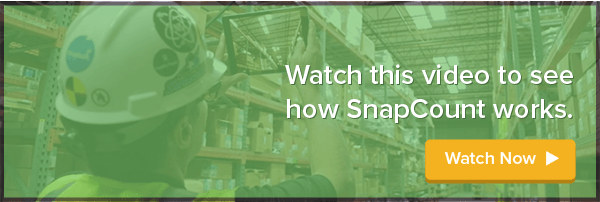
Given the quantity of inefficient lighting still in use in this country, it’s easy to envision a multi-billion-dollar lighting retrofit industry thriving for many years to come. That said, the retrofitters who will be most successful at tapping into this enormous opportunity will be those who adopt a smarter approach to selling – one that replaces conventional phrases like “save energy, save money” with messaging that really captures executive attention and supports proactive decision-making.
A few years ago, I wrote a book called “Selling Energy: Inspiring Ideas That Get More Projects Approved!” It became a Wall Street Journal bestseller by showing people how to be more effective sales professionals, rather than simply advocates for efficiency.
The insights contained in that book were the product of my experience influencing energy decisions in more than three billion square feet of buildings over two decades. None of it was hypothetical.
From those insights and experience, here are my top five actionable best practices that will help you start closing more retrofit deals immediately:
- Realize that not everyone cares about lighting.
- Forget about savings; talk about waste instead.
- Do what it takes to connect with a decision-maker.
- Tailor the proposal to your audience.
- Focus on non-utility-cost financial and non-financial benefits, not just energy savings.
Let’s dive into each of these best practices.
1. Realize that not everyone cares about lighting.
If you live, sleep and breathe lighting, this may be hard to hear, but most of your prospects have more important things on their minds than changing out their lights.
When your prospect wakes up in the morning, they don't say, “I really hope somebody takes an hour of my time today telling me how I could improve my lighting.” They probably have dozens of competing priorities swirling around in their heads, including burning issues they absolutely must address that day. Squeaky wheels and urgent matters typically dictate what makes it to the top of that list!
Bring up lighting with a prospect in this mindset and you’re bound to hear, “There’s nothing wrong with the lights. They’re all lit.”
You may think that focusing on prospects who already know they have a lighting problem to solve would increase your closing ratio. For example, you may encounter a business that recently suffered an accident or experienced a theft that could have been prevented with better lighting, so theoretically, they should be more interested in your pitch and more motivated to act, right?
There are at least two problems with focusing your sales efforts in this way. First, it significantly narrows your addressable audience. Second, prospects who already know they have a lighting problem may have already begun looking for a solution and perhaps even started an RFP process that will force you to compete for the business. Bottom line, if you focus on folks who already have an expressed need, you’ll miss a lot of opportunities.
Bringing a previously unrecognized problem to the table, expressed using the prospect’s preferred jargon and yardsticks, along with your solution to that problem, is a much smarter approach.
If you’re talking to a retailer, you might focus on increased sales. A manufacturer? Less scrap. A distribution warehouse? Better pick-and-pack accuracy. A dairy? Higher milk production (more on that later).
You may think you’re selling lighting and perhaps controls, but what you’re actually selling is better outcomes. The more you can reframe the benefits so that they can be measured with the yardsticks your customers actually care about, the more successful you’ll be at selling retrofits.
2. Forget about savings; talk waste.
Retrofitters often lead with the amount of money their projects can save. Given that we’re not living in a nation of savers, I believe this strategy represents a tragic misreading of our culture.
People today get much more excited about spending than saving. That said you can get people excited about saving provided you frame it in the context of all the things they could buy with those savings.
And remember, the promise of gain is less emotionally powerful than the potential to avoid loss. Emphasize how much money they are wasting each month – dollars that could be repurposed to pay for things on their “wish list.” Businesses of all sizes suffer from a perennial lack of capital. Corporate wish lists include items like major repairs, salary raises, and equipment upgrades that could generate additional revenue.
Moreover, nobody wants to work hard and earn a profit only to waste that money on utilities, particularly if you show them how they could be spending that money on their true priorities.
3. Do what it takes to connect with a decision-maker.
If you find yourself in front of someone with the power to approve or reject your proposal, you’ve done something right. But you won’t always be so “strategic” (or lucky). More often, retrofitting proposals are passed up the chain of command by either passive messengers or internal champions who are enthusiastic about your project.
In either case, it’s best to have your eye on the ultimate decision-maker as you fine-tune your value proposition.
You need to make sure the executive who has the check-writing authority will hear the same impassioned plea you would have given them yourself had you had the opportunity to speak.
That means preparing a memorable 15-second elevator pitch worth repeating and a one-page proposal that presents a compelling case – and remember to highlight not only utility-cost financial benefits but also non-utility-cost financial benefits and non-financial benefits (more on those later).
True decision-makers have little tolerance for long sales presentations or lengthy reports disguised as proposals.
People have time for about 15 seconds of spoken language and a concise summary they can read in four minutes or less. They don’t have time for a 50-page technical audit that looks like somebody’s tax return. Vendors often call these things “proposals,” but they’re actually reports, and face it, nobody wants to read a report. They want to know what and why, first. The how, how much, and when can be saved for the technical appendix, which will likely be delegated to someone else in the organization who will complete the due diligence.
4. Tailor the proposal to your audience.
The market for lighting retrofit projects runs the gamut from small businesses like restaurants and insurance agencies to mega-corporations with hundreds of facilities. Clearly, there can be no one-size-fits-all solution to closing deals. Prospects vary in terms of goals, values, and financial sophistication.
For example, a corporate COO might be comfortable discussing metrics like saving-to-investment ratio (the present value of your cash inflows divided by the present value of your cash outflows). A sole proprietor who runs a handmade sweater shop, on the other hand, might be confused by the term.
That doesn’t mean you shouldn’t run the numbers for a small business owner. You should; however, you should also translate those metrics into concepts that resonate.
If the project has a saving-to-investment ratio of 3.6, you might say, “Imagine this desk here was a magical ATM and for every dollar you put in this top drawer, $3.60 will pop out. Now, how many dollars would you like to put into this top drawer?”
By the way, don’t assume someone is financially sophisticated or not based solely on the size of the enterprise they happen to be running. The good news is if you calculate all the figures, you can decide whether to share them using sophisticated terminology like “SIR” or simple illustrations like the above-referenced ATM analogy.
5. Focus on non-utility-cost financial and non-financial benefits, not just energy savings.
In my workshops, book, and blog, I often talk about the non-utility-cost financial benefits of energy projects. In the context of a lighting retrofit, these are the quantifiable advantages that go beyond the typical energy-related metrics touted by your competitors (e.g., kilowatts, kilowatt-hours, therms, and so on).
Non-utility-cost financial benefits can be orders of magnitude greater than utility savings, and as such they can support truly compelling arguments that motivate your prospects to make a change. But what non-utility-cost financial benefits should you highlight?
That depends on how well you know the business dynamics of your prospect’s market segment and individual role.
For example, here are two surprising ways a switch to LED lighting generates segment-specific benefits:
- Researchers have found that if you apply LED lighting to an agricultural milking parlor, cows produce between 6% and 15% more milk. One such retrofit yielded a four-year payback from the lighting energy savings alone; however, once the value of the incremental milk production was included, the payback dropped to three months!
- An aluminum windows and doors manufacturer saw their scrap rate decrease by 25% after installing LEDs because the improved lighting enabled the workers to make more accurate cuts. The energy savings alone yielded a 4.2-year simple payback period; however, once the aluminum savings were included, the simple payback period dropped to 39 days!
My team and I have compiled these and countless other industry-specific benefits into a series of Segment Guides™. The result is a robust digital database that helps reframe the benefits of energy projects so they can be measured using the yardsticks your prospects are already using to measure their own success. These digital resources, as well as a one-page proposal builder, will also soon be available directly within the SnapCount software platform for users who hold the appropriate licenses from Selling Energy.
Segment Guides™ is the product of several hundred hours of research for each of more than 20 market segments (with more segments on the way). Our researchers continue to scan industry, academic and government publications, as well as empirical results shared by graduates of Selling Energy’s workshops, to find more and more connections between lighting projects and the outcomes your prospects and customers actually care about.
This kind of work – finding the real, human success stories behind energy efficiency projects – is one of my favorite aspects of what I do for a living. If it were all about the “bits, bytes, blinking lights” and how many kilowatt-hours a prospect could save, I think I would have retired a long time ago.
Licenses to Segment Guides™ can be purchased directly through Selling Energy and then linked to your SnapCount credentials so that those data points will be available to you from within the SnapCount software.






Share this post: